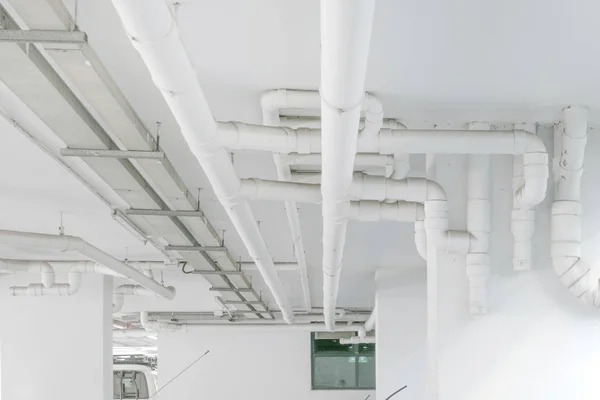How To Fix A Frozen Pipe With 6 Easy Steps

Plumbing pipes are meant to deliver hot and cold water to your faucet and sinks. However, during extreme winter, pipes may get frozen, too, causing the water supply to stop. And nothing can be more frustrating than seeing plumbing pipes frozen and out of work. You may feel like a broken person, not knowing what to do.
Did you face such conditions ever? If so, this guideline on how to fix a frozen pipe will uplift your plumbing skill. All you need is to apply heat in the frozen section of the pipe with hot water, a hair dryer, or any other means to unfreeze it ASAP.
Does it still seem difficult? Continue reading the article and see how easy it is to unfreeze your pipes during sub-zero temperatures. Read more
How To Fix A Frozen Pipe
When outdoor temperature falls below zero, and there’s snowfall, pipes can freeze. At such times, you must apply heat to unclog the frozen pipe.
Step 1: Turn off the Water Supply
Like any plumbing repairs, you must turn off the water supply of the frozen pipe first. For this:
- Locate the main water shut-off valve in your home
- The shut-off valve will often close to the main water tank
- Turn off the supply line to prevent any further water flow.
Step 2: Identify the Frozen Pipe
Next, you need to find out which pipe or which part of the pipe is frozen. You may feel cold spots with your hands or visible frost on the exterior of the pipes. Some common areas for frozen pipes include:
- Exterior walls
- Unheated crawl spaces
- Attics.
As you search for it, you should locate the frozen pipe soon. After that, you can proceed to unfreeze it. You must be careful not to damage or break the pipe to avoid costlier replacements.
Step 3: Open Faucets
After identifying the frozen pipes, you have to pen faucets connected to the pipe. It is crucial to relieve pressure from the inside of the pipes. Also, it will help you to prevent potential bursts and stooping the pipe from unnecessary damage.
Relieving pressure from the pipe is essential because as the ice begins to thaw, it can create pressure in the pipe. When you open the faucet and leave it as it is for a few minutes, the air pressure can escape, allowing the water to run through the pipe.
Step 4: Apply Heat to the Frozen Pipe
You have to thaw the ice with heat to the frozen section of the pipe, too. It will unfreeze the water and let it flow properly. You can use several methods to thaw the ice inside the pipe. For professional help click here.
- Hair Dryer:You may use a hair dryer to thaw the ice. Just set the hair dryer on a low or medium setting and let the blow warm air directly onto the frozen pipe. You need to move the dryer along the pipe. During this time, focus on the frozen section until the water starts to flow again.
- Heat Lamp:You may use heat instead of the hair dryer to warm up the pipe. Position the heat lamp at a safe distance away from the pipe. Then, leave it until the ice thaws, usually taking an hour or so.
- Heat Tape or Electric Pipe Heat Cable:You may even wrap the frozen pipe with heat tape or an electric pipe heat cable. These heat cables or tapes are designed explicitly for unfreezing pipes during winter. The tape will generate heat to remove the ice gradually.
- Warm Towels:Sometimes, you may need access to specialized heating tools. If so, you can soak towels in hot water and wrap them around the frozen pipe. Reheat the towels as needed to continue thawing the ice. Alternatively, you can pour hot water through the pipe.
Step 5: Be Cautious with Open Flames
You may be tempted to use open flames to fix a frozen pipe. However, we strongly discourage using open flame, propane torch, or other high-heat sources to thaw a frozen pipe.
If you do so, it can create a fire hazard. Also, it could damage the frozen pipe or surrounding materials. Instead, you should stick to safe heating methods, as mentioned in Step 4.
Step 6: Insulate Exposed Pipes
Once you have successfully repaired the frozen pipe, you must take preventative measures too. It is crucial to avoid future freeze-ups. So, you should insulate exposed pipes with tape or anything similar items.
It is indispensable for the pipes located in unheated areas to protect them from freezing during cold weather. After unthawing the pipe, turn on the main water supply slowly. Also, check for any leaks around the repaired pipe or connections.
Conclusion
Repairing a frozen pipe isn’t rocket science. So, you don’t need to be Einstein to fix a frozen pipe. All you need to do is locate the freezing section and apply heat. Always ensure you maintain proper safety features for the heat application time.
Also, you can insulate the pipe before winter comes to prevent it from freezing. Enjoy uninterrupted water flow during the coldest days of the year will be a better option. Also, it will prevent the pipe from bursting as ice inside the pipe can damage or leak it easily.
Also Read Interesting Articles At: Tech bigis.






